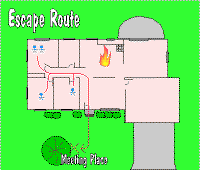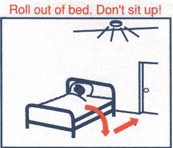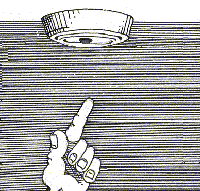Brighton Township V.F.D. 2018 Annual REPORT
Fire Chief Mitchell Curtaccio has issued the following 2018 statistical report for the Brighton Township Volunteer Fire Department.
Structural – 33
Fire Alarms – 69
Brush – 8
Vehicle Accidents – 36
Vehicle Fires – 9
QRS – 239
Service Calls (CO Alarms, Wires Down, etc.) – 113
TOTAL CALLS FOR 2018 – 507
The Department is looking for members 18 years of age or older. The Department permits Junior members ages 16 and 17. Stop in at Fire Station No. 3 at 84 Grange Road on Mondays from 6:00 to 9:00 P.M. or email us at station63@comcast.net if you want more information or are interested in volunteering.
Fire Hydrants – Township Code makes it unlawful for any person, other than those authorized by the Township, Fire Department or Municipal Authority, to open, tamper with or interfere in any manner with any fire hydrant. No obstructions are to be planted, constructed or placed within six (6) feet of any hydrant.
Burning – Burning of household papers or other permitted refuse must be done within a salamander wire basket or masonry enclosure with a top to prevent fly ash from escaping. Such burning is prohibited on Sundays, Mondays, Tuesdays or legal holidays. Burning is permitted Wednesday through Saturday between 7:00 A.M. and 7:00 P.M. Please monitor all outdoor burning activity closely to prevent brush and other wild fires.
Donations – If you wish to financially support the Fire Department, donations can be made online through the BTVFD website www.brightontwpvfd.org or by check to BTVFD and mailed to 84 Grange Road, Beaver, PA 15009.
FAMILY ESCAPE PLAN
Some Facts About Fire
- Most fatal home fires occur between midnight and 8 a.m. when people are asleep.
- Toxic gases and heat (over 1000 degrees) rise and can travel far ahead of the actual flames.
- When your smoke detector sounds, you may have less than 2 minutes to get out and stay out. That’s why your family needs an escape plan.
What To Do
Draw a sketch of your home. Mark at least 2 ways to get out of every room. The first way should be the door, and the second way out might be a window. If the window is higher than ground level, you may want to purchase an emergency escape ladder and keep it near the window.

Decide on a meeting place outside where everyone can be accounted for. Practice twice a year.
How to Practice
Begin with everybody in Bed. Someone should press the “test button” on the smoke detector or yell “fire” to sound the alarm. Everyone should roll out of bed. That way, you stay below any heat or smoke that may be present in the room.

Don’t stop to get any possessions. Don’t even stop to call the fire department. That should be done from the safety of a neighbor’s house after you get out.

Once outside, go to your designated meeting place where everyone will meet up to make sure everyone is safe. Have someone simulate calling the fire department. Practice twice; the first time use the normal exit. The second time, pretend the door is hot, and use the second way out. Afterwards, talk about the drill. Make any changes to the plan if necessary and rehearse them.
If It’s A Real Fire
DO NOT reenter the building until the fire department says it is safe to do so.
If your clothing catches fire, STOP, DROP and ROLL. Stop right where you are, Drop to the Ground Gently, and Put your Hands over your face and roll over and over until the flames are out.

PORTABLE FIRE EXTINGUISHERS
A portable fire extinguisher can be a homeowner’s best friend in combating small fires before they can turn into a raging inferno. But a homeowner must have the right type of extinguisher and know how to properly use it. The following information should provide you with some useful guidelines.

SELECTING A FIRE EXTINGUISHER
When burning, different materials will require different extinguishing agents. Therefore, extinguishers are labeled with the letters A, B, or C (or a combination) to designate their proper use.
Class A – Ordinary Combustibles

These fires involve wood, paper, clothing, etc. Water can be used on these fires.
Class B – Flammable Liquids

Some examples of these fires are gasoline, oil, or grease fires in the kitchen. Use of water on these fires will not extinguish them, but instead can make them spread.
Class C – Electrical Fires

Any fires that involve electricity fall into this category. Electrical appliances, even though they may be made up of “class A” materials, are considered to be “Class C” until it is certain the electricity is off. Because water is a conductor of electricity, it should never be used on these fires.
PURCHASING YOUR EXTINGUISHER
Since all of these fire classifications may be present in the home, it is recommended that you purchase a fire extinguisher that handles all types of fires. Multipurpose Dry Chemical (ABC) Extinguishers are relatively inexpensive and are readily available at hardware or department stores. These extinguishers are capable of handling all of the common types of fires mentioned above. Avoid the temptation to purchase the smallest extinguisher offered. It may not have enough extinguishing agent to combat a growing fire. Instead, a five-pound ABC extinguisher is large enough to handle most incipient fires that may develop, yet small enough to be handled by just about any member of the household.
HOW MANY TO BUY, AND WHERE TO MOUNT THEM
There should be an extinguisher on every level of your home. Mount the extinguisher(s) in a location that is easy to reach in an emergency. The best location is often next to a door or entrance so you will not have to pass the flames or smoke in order to reach it.
USING A FIRE EXTINGUISHER
1. Call 911 First! A fire extinguisher is no substitute for the fire department. Only use a fire extinguisher after you have notified the fire department.
2. Only use an extinguisher on small fires. Make sure that you can get out if the fire grows. If you feel that a fire is too big to control with the extinguisher, Get Out! The fire department is on the way.
3. Start from about 6 feet away. Use the “PASS” system:
P: Pull the Pin
A: Aim the hose or nozzle at the base of the flames
S: Squeeze the Handle (the extinguisher will discharge)
S: Sweep from side to side, moving in on the fire as it dies down.
If the fire does not go out quickly, close the door to the room and exit the premises immediately. Wait for the fire department out front and direct them to the location of the fire.

SMOKE DETECTOR QUESTIONS AND ANSWERS

Q: Why do I need a smoke detector? Won’t I just wake up from the smell of smoke?
A: No, you cannot smell smoke while you sleep. In fact, the Carbon Monoxide present in the smoke will lull you into a deeper slumber.
Q: Do smoke detectors really work?
A: YES! According to statistics from the National Fire Protection Association, you are twice as likely to survive a fire in your home if you have properly installed and maintained smoke detectors.
Q: How many smoke detectors do I need?
A: As a minimum, you should have at least one smoke detector on each level of your home, and outside each sleeping area. For added protection, install a smoke detector inside each sleeping area as well.
Q: There are so many types of smoke detectors available. Which one should I buy?
A: Make sure you buy a smoke detector that is listed by an independent testing laboratory such as Underwriters Laboratories (UL.) All listed smoke detectors on the market today provide adequate warning of fire.
Q: Where should my smoke detector be mounted, on the ceiling or on the wall?
A: The ceiling is the best location for the detector, but you can also mount it high on a wall. If you choose to mount it on the ceiling, make sure it is at least 4 inches away from the nearest wall. If you mount the detector on the wall, mount it so that the top of the detector is between 4 and 6 inches from the ceiling.

Q: How often do I need to change the batteries in my smoke detector?
A: To ensure that you always have operable batteries in your smoke detector, it is recommended that you change the batteries twice a year. A good way to remember when to replace them is to change them when you change your clocks for daylight savings time. Use only the types of batteries recommend on the detector.
Q: Do smoke detectors ever need replacing?
A: Yes. All smoke detectors, including hard wired ones, need to be replaced when they are 10 years old. After 10 years, the detectors may not operate properly in the event of a fire.
Q: Do I need to test my smoke detector, and how often?
A: You should test your detector monthly, be pressing the “Test” button on the unit. Never use real smoke to test the detector.
Q: What if my smoke detector sounds when I cook?
A: If your smoke detector sounds when you cook, you can usually silence it by fanning it with a newspaper to clear smoke from the chamber. Do Not remove the batteries. You could forget to replace them. If normal cooking activity sets the detector off regularly, you may need to reposition it further away from your kitchen. If moving the detector is not possible, you can also replace it with one that has a momentary silence button, designed specifically for that purpose.
Q: Is there anything else I need to know about smoke detectors?
A: Yes. Dust can accumulate and decrease the detector’s sensitivity. Clean your smoke detectors annually by vacuuming them out.